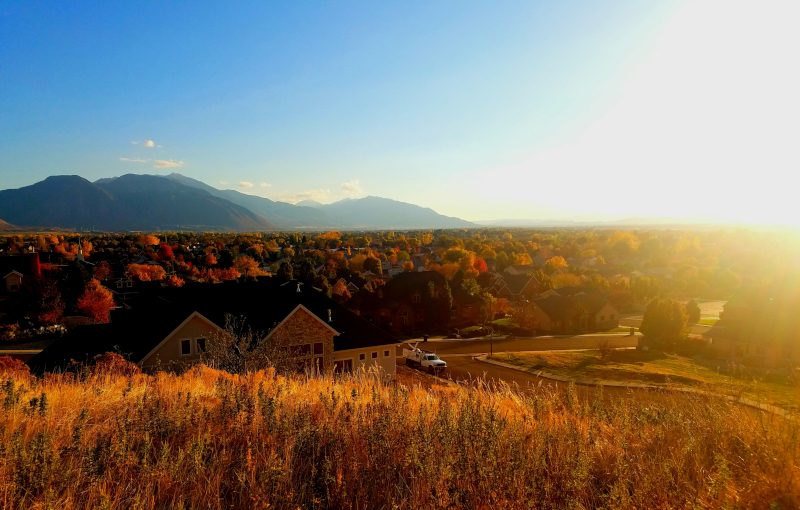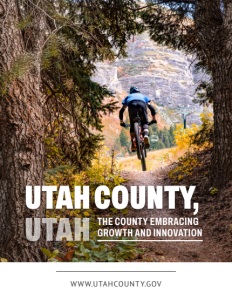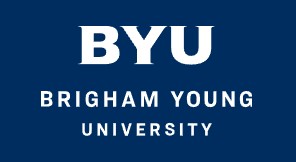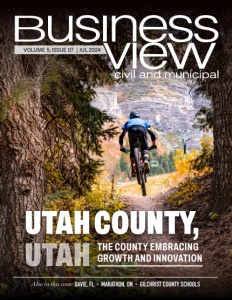Utah County, Utah
The County Embracing Growth and Innovation
Economic diversification and meticulous planning lay the foundation for future expansion in state known for its natural splendor
For the residents of Utah County, Utah, collaboration is the key to success, laying the foundation for a dynamic future to look forward to. County leadership emphasizes strengthening partnerships between local governments, educational institutions, and businesses to drive economic development and attract investment.
Strategic infrastructure projects, such as expanding the transportation network and enhancing water and power systems, are also critical to support the county’s growing population and are a clear indicator of the keen foresight at play in the county’s growth strategy.
Education and workforce development are also key pillars of success. With five major universities within its boundaries, Utah County continues to invest in education programs to attract and retain talent.
By nurturing a skilled workforce, the county can sustain a thriving business environment that encourages innovation.
Additionally, promoting a diverse range of industries, from tech and manufacturing to agriculture and hospitality, will ensure economic resilience and sustainability.
At its core, the county’s strategy is meant to support a quality residential lifestyle. So a big part of the county’s plans included creating walkable neighborhoods, preserving green spaces, and providing ample recreational opportunities.
Success for Utah County means a dynamic, inclusive community where people can live, work, learn, and play harmoniously.
It ultimately looks like a place where innovation and tradition coexist, economic opportunities are abundant, and where the natural beauty and vibrant culture create a thriving, desirable environment for all.

The Economic Spirit of the County
Utah County, located about an hour south of Salt Lake City, is renowned for its vibrant community and picturesque landscapes.
Birthplace of the Sundance Film Festival, the county boasts a population of approximately 750,000, characterized by its youthful demographic.
The presence of five major universities, the two most well-known being Brigham Young University and Utah Valley University, also contributes to a dynamic and forward-moving environment.
The county also maintains a unique blend of agriculture and urban living, where residents can enjoy a seamless integration of work and recreation.
“We still have thriving areas where you could live and walk to your place of employment as well,” says Utah County Commissioner Brandon Gordon.
With abundant recreational opportunities and breathtaking scenery, Utah County offers an exceptional quality of life, and a large factor behind that quality involves the county’s economic development and pro-worker ecosystem.
“Truly what’s fueling our prosperity is a robust workforce ecosystem that is built on two very important attributes: collaboration and innovation,” explains President and CEO of the Utah Valley Chamber of Commerce Curtis Blair.
The county has established a strong partnership network involving cities, counties, and regional organizations, fostering a dynamic collaboration between various stakeholders.
This cooperative spirit is crucial in reinvesting in education programs, retaining talent, and nurturing a thriving business environment.
Utah County is home to five major universities. Other than Brigham Young and Utah Valley, the county also hosts niche institutions like Rocky Mountain University, the Noorda College of Osteopathic Medicine, and Mountainland Technical College (MTech).
These institutions play a pivotal role in attracting and retaining skilled individuals, further enhancing the county’s appeal for investment and growth.
The combination of educational excellence and a collaborative business environment positions Utah County as a desirable location for businesses and residents.
Community Promotion and Development
Utah County’s strategy for promoting its community focuses on promoting the region as the optimal place to live, work, learn, play, and raise a family.
“Our main focus is trying to make the best environment possible… and to truly adopt all of the best planning and land use practices that we can,” says Utah County Administrator Ezra Nair.
The sentiment behind this goal is quite simple.
Residents should be able to enjoy the recreational and work-related opportunities available to them without transportation and accessibility being an issue.
The county employs a diverse mix of communication platforms to market itself, including social media, traditional media, and partnerships with organizations like the Utah Valley Chamber of Commerce and the Economic Development Corporation of Utah (EDCUtah).
This multifaceted approach ensures that the county reaches a wide audience, effectively communicating the benefits and opportunities available in the region.
The Provo metropolitan area, for instance, has been rated the number one city in the nation by the Milken Institute, reflecting the county’s overall appeal.
The county’s diverse tech sector, high-growth cities like Lehi and Vineyard, and established areas like Provo and Orem also contribute to its attractiveness.
So, with these attractions and a potential bid to host the future Olympics in mind, infrastructure development is a key focus for Utah County, with several major projects underway or in planning stages.
The South Utah County water line project, spearheaded by the Central Utah Water Users, aims to address water supply issues, especially during dry years.
Additionally, the inland port in the Spanish Fork area, known as the Verk (Icelandic for job, work, or creation) Industrial Project, is set to significantly enhance infrastructure, including water, power, sewer, and road widening projects.
The county is also expanding its transportation network.
“It’s called the housing and transit reinvestment zone (HTRZ) that the state has helped partially fund to help bring additional tax dollars and incentivize development in [certain] areas so that people have more options to get around the state without necessarily having to be stuck in traffic all the time,” Nair explains.
The Provo Regional Airport is increasing its flight offerings as well, including international routes, and partnerships with the state are driving investment in commuter rail and light rail systems.
The FrontRunner line, the main commuter rail, is being developed to include more work hubs along the line to reduce traffic congestion.
Furthermore, efforts are underway to connect the two main airports in the state and improve east-west transportation links, particularly in rapidly growing areas like Eagle Mountain and Saratoga Springs.
“We’ve tried to help encourage the cities to take the bulk of the development… it’s really helped to disperse the load of having too many government entities trying to do too many different things,” Nair says.
Having the cities themselves direct development is an excellent way to ensure that the work being done is best aligned with any given city’s specific needs, and shows the multi-faceted nature of the county’s development strategy.

Building for Tomorrow, Today
Looking ahead, Utah County has several exciting developments on the horizon. The new regional sports complex in Provo, set to include facilities for pickleball, soccer, lacrosse, and tennis, is anticipated to attract visitors from around the world.
The complex’s completion will significantly boost local tourism and economic activity and has even inspired consideration from county leadership to develop more hotel space to accommodate the inevitable influx of people, both residents and tourists alike.
According to Blair, this new complex is lining up to be a project “the likes of which people have never seen in the intermountain west.”
The Provo Regional Airport is also due for an expansion which is set to include new flights by American Airlines, positioning it as a major secondary airport in the region.
This development will undoubtedly synergize well with any plans to improve transportation and hotel/living accommodations.
Additionally, the potential return of the Olympics in 2034 and the revival of outdoor retailer conventions highlight the county’s growing prominence on the national stage.
Utah County’s appeal is further bolstered by major corporations like Adobe, Qualtrics, Nu Skin, and Boeing, which all hold significant conventions in the area.
So, when taking into account this combination of world-class amenities, strategic infrastructure projects, and a collaborative business environment, it becomes clear that Utah County will remain an appealing destination for businesses, residents, and visitors alike.
Utah County’s blend of youthful energy, collaborative spirit, and strategic development projects positions it as a beacon of development and novelty.
As the county continues to attract investment, enhance its infrastructure, and promote its unique qualities, the future looks incredibly promising.
With a focus on creating a thriving, diverse, and dynamic community, Utah County is set to achieve new heights of success and prosperity.
AT A GLANCE
Utah County, Utah
What: A vibrant state county embracing growth and innovation through economic diversification and meticulous planning.
Where: Utah County, Utah, United States
Website: https://www.utahcounty.gov/
PREFERRED VENDORS
Brigham Young University – https://www.byu.edu
BYU’s 34,000 students pursue nearly 200 undergraduate majors and 130 graduate programs as they seek learning by both study and faith. BYU students strive to be disciples of Jesus Christ, sharing light and love with God’s children throughout the world.
Huntsman Cancer Institute – huntsmancancer.org/vineyard
Huntsman Cancer Institute at the University of Utah is the National Cancer Institute-designated Comprehensive Cancer Center for Utah, Idaho, Montana, Nevada, and Wyoming. With a legacy of innovative cancer research, groundbreaking discoveries, and
Horrocks – horrocks.net
For 55 years, Horrocks has led infrastructure design and improvement efforts for clients throughout the West. A full-service civil engineering and professional services firm, we study, plan and design myriad infrastructure projects. Our custom technology solutions bolster those efforts, enhancing project delivery and improving efficiency, collaboration, and communication throughout the project lifecycle.






